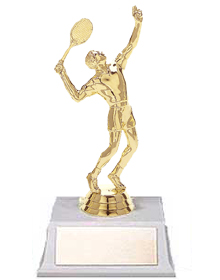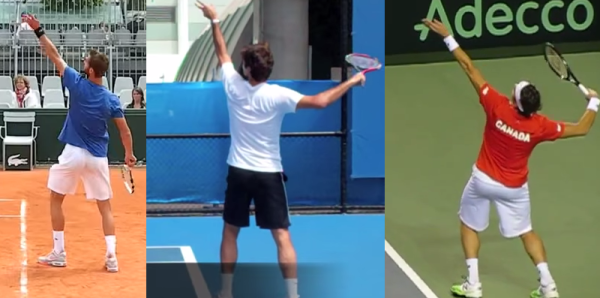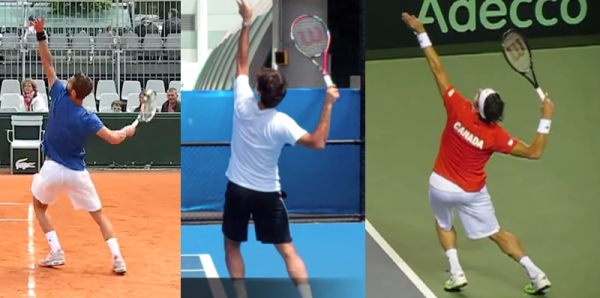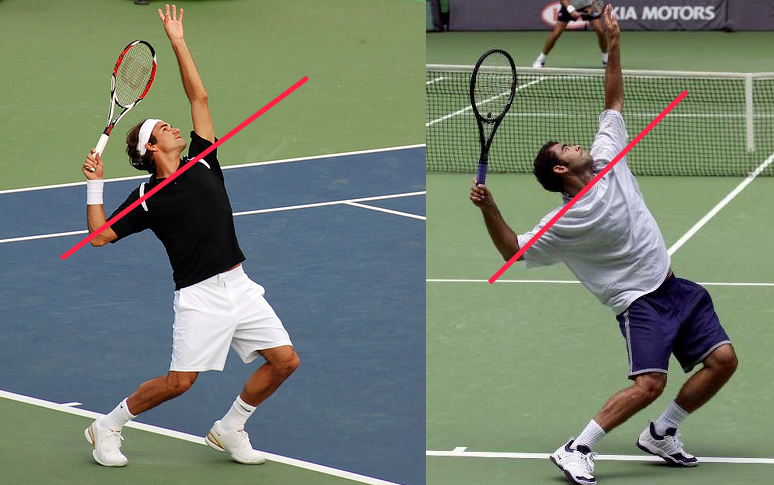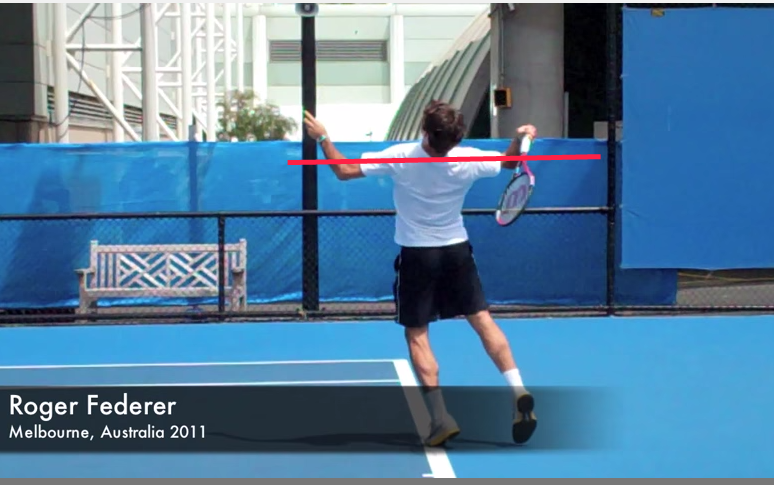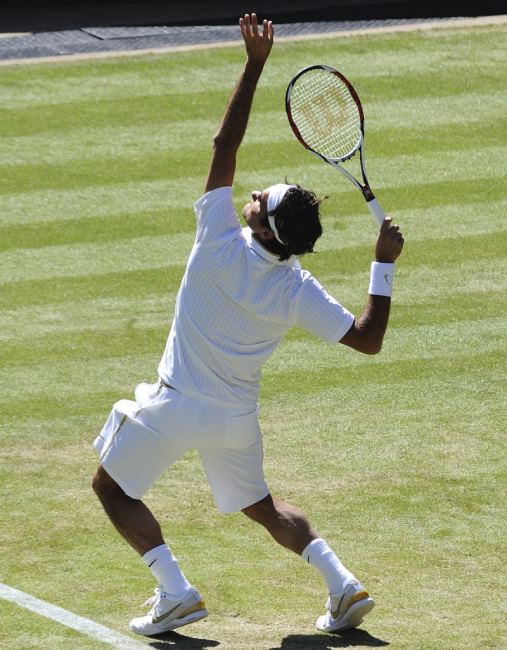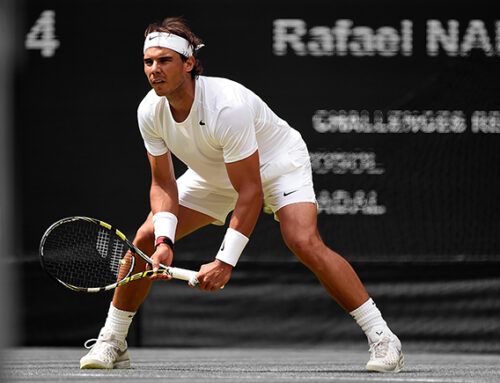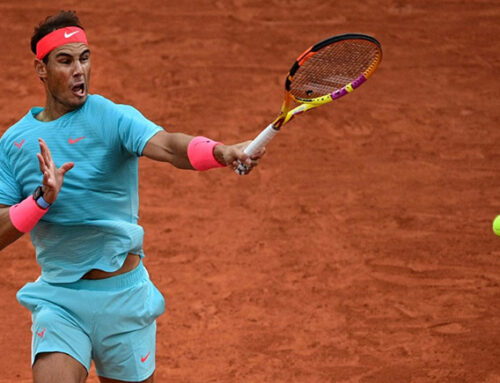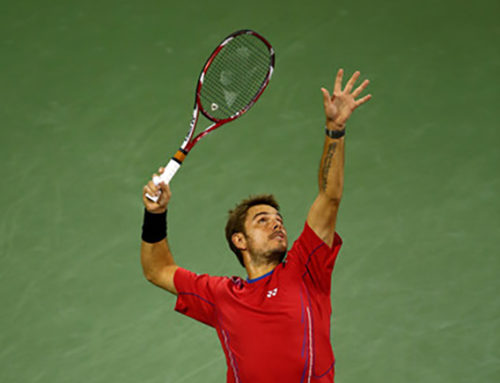In Part 2 of Tactical Tennis’ series on the serve (go here for Part 1) we examine the service motion of Frenchman Benoit Paire. Paire is a name that is known mostly only to serious tennis fans – the 25 year old Frenchman has long been viewed as one of the potential up-and-comers to replace the current generation of greats. However Paire’s talent has largely failed to materialize actual meaningful results at the pinnacle of the game. We could look at a variety of reasons for this, but perhaps foremost is the fact that, for his height, Paire has what we can only generously term an exceedingly mediocre serve. At 6’5 Paire has the frame to possess one of the most fearsome serves in the sport. However a quick comparison with the Milos Raonic and Roger Federer shows that his serve is anything but:
| First Serve % | Ace % | First Serve % Won | |
|---|---|---|---|
| Benoit Paire | 51% | 17% | 72.54% |
| Milos Raonic | 62% | 32.9% | 82.3% |
| Roger Federer | 63% | 17% | 77.73% |
Now granted Raonic has the most fearsome serve in the game (yes, his aces serve far outstrips that of even 6’9 John Isner) he serves to show the potential that can be had from a 6’5 player with a good service motion. Throwing Federer in there is just rubbing salt in the wound – at 4 inches shorter Federer hits aces at the same rate as Paire but makes 12% more of his first serves!
What does this really tell us? In essence that there are some fundamental problems with Paire’s service motion! With his height he should either be putting far more first serves in play at his current ace rate, or hitting significantly more aces at his current first serve %. Or, as with Mr. Raonic, both. So we can look at these statistics and realize that Paire’s neither being overly cautious nor aggressive with his serve. This is not an issue of serving philosophy, but rather one of technique. So what is the problem with Paire’s serve?
The Importance Of the Trophy Position
If you’ve taken a tennis lesson from a half-decent pro that involved the serve you’ve probably heard of the ‘trophy position’. It is so called because if you’ve ever won or even seen a tennis trophy for a non-professional event there’s a very good chance it looked something like this:
Now the first question we ask is: why is this position so important? The answer is, unfortunately neither simple nor easy to convey in a single article. However if we can accept a few basic principles of tennis strokes perhaps we can sidestep some of the more detailed explanations. So let’s start with some concepts:
1) Long, smooth acceleration tends to be better controlled than short, violent acceleration
2) Rapid changes of direction of the racquet head do not lend themselves to long, smooth acceleration
3) Every position in a tennis stroke is path-dependent. Which is a scientific way of saying it doesn’t just matter that the body/racquet got there, but how it got there makes a difference
Keep these ideas in mind when we look at the following image:
In this image we have, from left to right, Benoit, Federer and Raonic all at a very similar stage of their service motion. Hopefully at a glance we can see that while Raonic and Federer have similar positions with their right arms, Paire’s serving arm is in a different location altogether. Whereas Federer and Raonic bring their left and arms up together in a somewhat synchronized fashion (the racquet arm coming up together with the tossing arm), Benoit lets his racquet arm lag behind, holding it down low near his waist while his tossing arm goes up. This has consequences for the rest of his motion, as we can see here:
We can see in this image all three players in the trophy position. Or rather, we can see two players in the trophy position and Paire approaching a trophy position. This is critical because at this point in the serve both Federer and Raonic are poised for their racquet head to drop down their back smoothly and to begin acceleration along that same plane up to the ball. Not so for Paire. His racquet is still trailing, and is not in line to drop down his back smoothly. Instead Paire most bring the racquet head up in line with his shoulders, then rapidly change its direction and pull it down his back to begin his attack on the ball. Now remember concept #2 from above? That rapid changes of direction do not lend themselves to smooth acceleration?
The problem is Paire is playing catchup because his arm lagged behind earlier in the stroke. As such he is rapidly transitioning through the natural power position that all great servers in the history of tennis have hit clearly and distinctly. Sampras, Ivanisevic, Krajicek, Becker, Philippoussis etc etc all had clearly recognizable and distinct trophy positions that are surprisingly identical despite other aspects of their motions being wildly different.
This is a problem I deal with sometimes in the college ranks, and almost invariably the culprits communicate that they feel like their motion is more powerful when they let their serving arm linger. The rapid and violent acceleration needed to catch up to their contact point gives them the illusion of power but in reality they are sacrificing control (and ironically often sacrificing power as well). In practice what we see is that servers who lag their serving arm typically have trouble hitting certain locations in the box, and their serve % is lower than it should be for their given height and serving philosophy.
Key Elements of the Trophy Position
Let’s not settle for just pointing out something that Paire does poorly – we can take this as an opportunity to highlight one of the absolute key positions in an effective service motion! So what are the key elements of the trophy position?
The High Elbow
Element #1 is what I’ll just call the ‘high elbow’. A common mistake at this point of the serve is for people to drop the elbow below the plane of the shoulders. You can see here with both Federer on the left and Sampras on the right that their elbow is an elevated position, either level with or slightly above the line of the shoulders. This is critical to allow good external rotation of the shoulder as the racquet drops down the back – lowering the elbow at this stage limits external rotation, limiting power while also introducing unnecessary movement into the motion.
Just to highlight this idea, here is Federer in external rotation. We can see that his elbow position relative to his shoulders is unchanged – it is a stable point of rotation as he drops the racquet down his back and begins to accelerate up to the ball.
Body Alignment
The second key element is the body alignment. It was rather tricky to find a good image to display this, but the one shared below should illustrate the point nicely:
What exactly do we mean by ‘body alignment’? If we look at Federer’s left shoulder, right shoulder, right elbow, right wrist and racquet head, they all lie on the same plane. You could almost imagine Federer as a mime, pretending to press his body up against an imaginary glass wall. Why is this alignment important? It allows Federer to accelerate his racquet down his back into external rotation of the right shoulder most efficiently (as mentioned above when comparing Paire’s serve to that of Federer and Roanic).
The Extended Left Arm
We don’t even need a new picture for this last one – the extended left arm. In the image above you can see Federer’s left arm is extended up high into the air, and remains there until relatively late in his service motion. A very common error among beginning and intermediate players (and even sometimes advanced ones) is a tendency to pull the left arm down prematurely. When this occurs, it drags the left shoulder with it, breaking the player’s posture and shortening their reach up to contact. They are both physically weaker, and also making contact lower which is a bad combination for good serving!
Conclusion
It’s time to bring the conversation back to Paire. His lack of a distinct trophy position isn’t the only thing wrong with his serve – he could use more leg drive for starters. However it is the single most obvious technical element that he could improve to quickly get results. We could forgive numbers like this from players in the 5’9-5’10 range, but even there are 5’10 players like Kohlschreiber who are simply better servers than Paire despite giving up 7 inches in height to the man. The good news for Paire is that this is a relatively simply fix. The bad news for Paire is that like so many other high level pros with glaring technical problems he will likely never fix it. For the rest of you however, don’t repeat his mistake! Focus on a good, strong trophy position in your service motion and your serve will improve!
